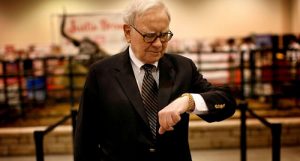Nicola Sturgeon’s time as Scotland’s first minister in 10 charts
Nicola Sturgeon’s time as first minister of Scotland has certainly been eventful.
Since becoming leader on 20 November 2014 in the aftermath of the Scottish independence referendum, there have been five different UK prime ministers, three general elections, two Scottish parliament elections, one pandemic and Britain has left the EU.
She departs, unusually among political leaders, with her party still popular according to the polls, but recent controversies have piled pressure on her personally.
Although many powers of government are still reserved for Westminster, Ms Sturgeon has been responsible for the Scottish economy, education system and health service, as well as her party’s electoral performance, for more than eight years.
In 10 charts, here’s how well or badly her country and her party have performed under her leadership.
Health
In her resignation speech, Ms Sturgeon said: “Leading this country through the COVID pandemic is, by far, the toughest thing I’ve done. It may well be the toughest thing I ever do. I certainly hope so.”
Ms Sturgeon was responsible for Scotland’s lockdown laws, as well as the vaccine rollout and the NHS during the pandemic.
With different local issues at play there’s no single measure to assess how well or badly a country performed during the pandemic, but there were fewer deaths in Scotland compared with England and Wales, as a proportion of the total population.
Ms Sturgeon doesn’t leave the Scottish health system in good condition, however. A&E waits in December were worse than those in England and Wales for the first time since records began.
Almost two in five patients waited more than four hours to be seen in A&E, seven times more than the target.
Drug misuse has been a scourge of Scottish public health well before Ms Sturgeon became first minister, but things have got worse under her leadership.
The head of Scotland’s drugs taskforce resigned last year after the number of drug-related deaths had risen for seven years in a row, to 1,339, and was by far the worst rate in Europe.
Here’s how drug deaths in Scotland compare to the rest of the UK.
Education
In Ms Sturgeon’s first speech in the Scottish parliament after her election victory in 2016 she set out a clear agenda for her time as leader.
“The defining mission of this government will be education,” she said, as she pledged to widen access to university to deprived communities and keep tuition fees free.
The target was that 20% of Scottish university entrants would come from the 20% most deprived communities by 2030. This was achieved in 2021, nine years early.
In the 2021/22 university intake, there were 243,890 students from the 20% most deprived areas, a rise of 52,365 (more than a quarter) compared with four years previous.
Economy
Keeping things like higher education free is an expensive thing for a country to provide. During Ms Sturgeon’s tenure as leader the government has consistently spent more than it takes in – meaning there is a budget deficit.
This deficit has expanded beyond that of the UK government in the past eight years.
Many workers pay higher income tax in Scotland than in the rest of the UK. Those earning between £25,688 and £43,662 pay 21% in the 2022/23 tax year, while those earning between £43,662 and £150,000 pay 41%.
In England, workers earning £12,571 to £50,270 pay 20%, while those earning more than £50,270 up to £150,000 pay 40%.
Elections
Arguably the most important measure of success, for a politician, is at the ballot box. The SNP has performed incredibly well at both UK and Scottish parliament elections for a decade now.
From general elections, to the Scottish parliament, to European votes, Ms Sturgeon’s party has won every single national election under her leadership, but it was the breakthrough Westminster election in 2015 which will perhaps be most memorable.
Due to the electoral system in Scotland it is almost impossible to secure an overall majority. Ms Sturgeon fell just two seats short in 2021, winning 63 of 129 seats overall, meaning the SNP currently share partial power with the Scottish Greens.
The Scottish Conservatives and Labour currently have 11 fewer seats at Holyrood put together than the SNP.
Independence
The one electoral challenge that Ms Sturgeon will feel disappointed not to face as first minister is an independence referendum.
She was deputy first minister in 2014 when her predecessor Alex Salmond led the unsuccessful ‘Yes’ campaign to a 45%-55% loss.
Click to subscribe to the Sky News Daily wherever you get your podcasts
The pendulum has swung back and forth several times, but the average of recent polls suggest that if allowed to vote again, Scotland would leave the UK and become an independent country.
The Data and Forensics team is a multi-skilled unit dedicated to providing transparent journalism from Sky News. We gather, analyse and visualise data to tell data-driven stories. We combine traditional reporting skills with advanced analysis of satellite images, social media and other open source information. Through multimedia storytelling we aim to better explain the world while also showing how our journalism is done.
Why data journalism matters to Sky News


